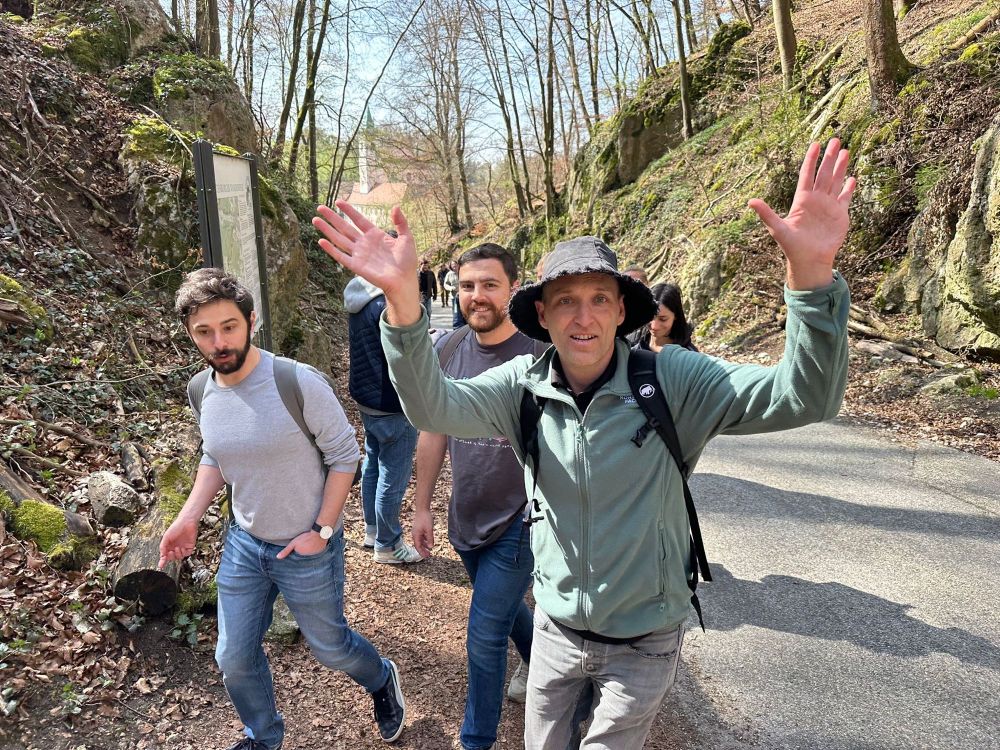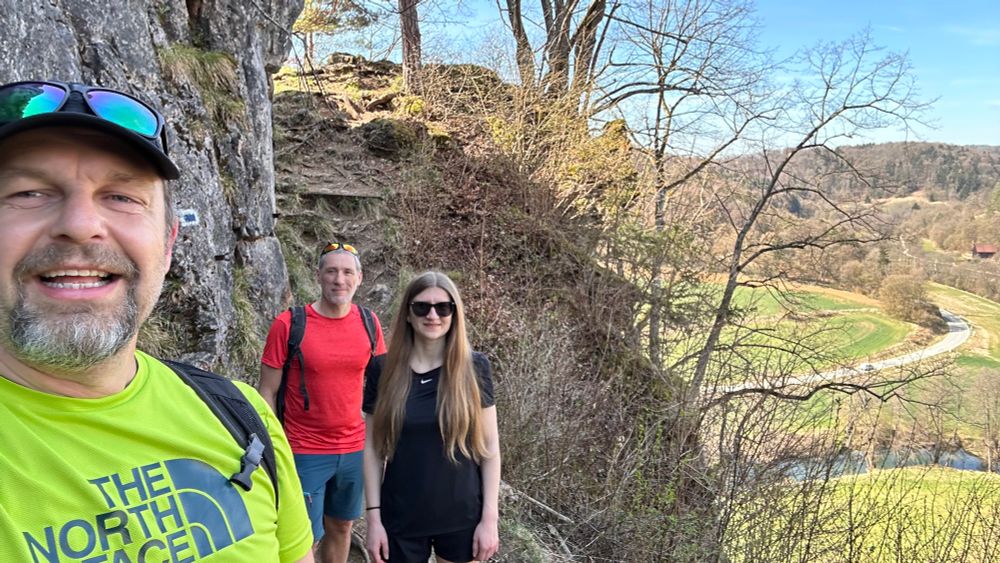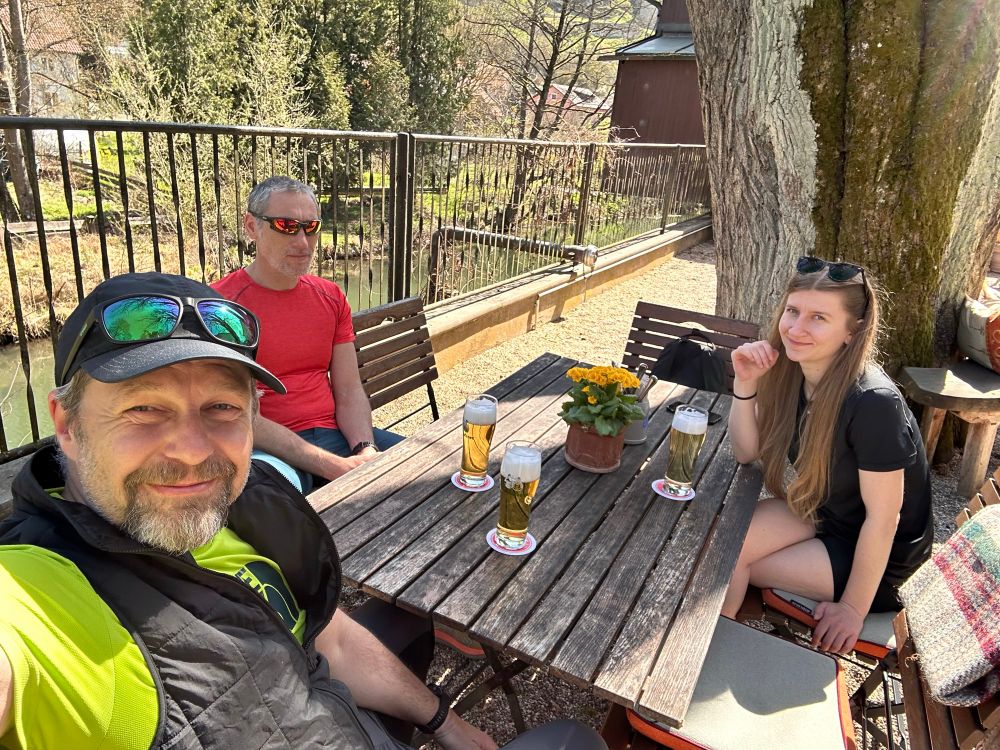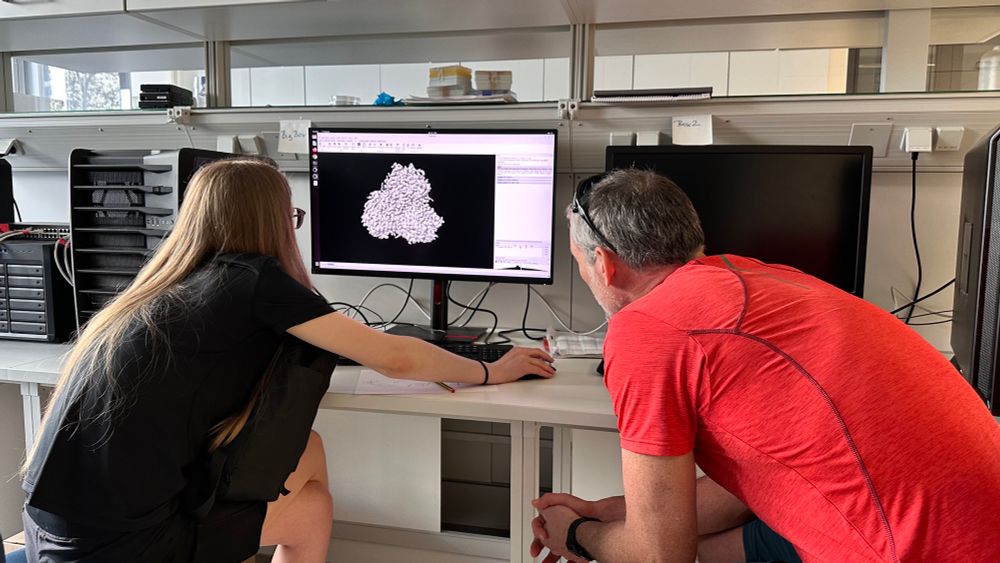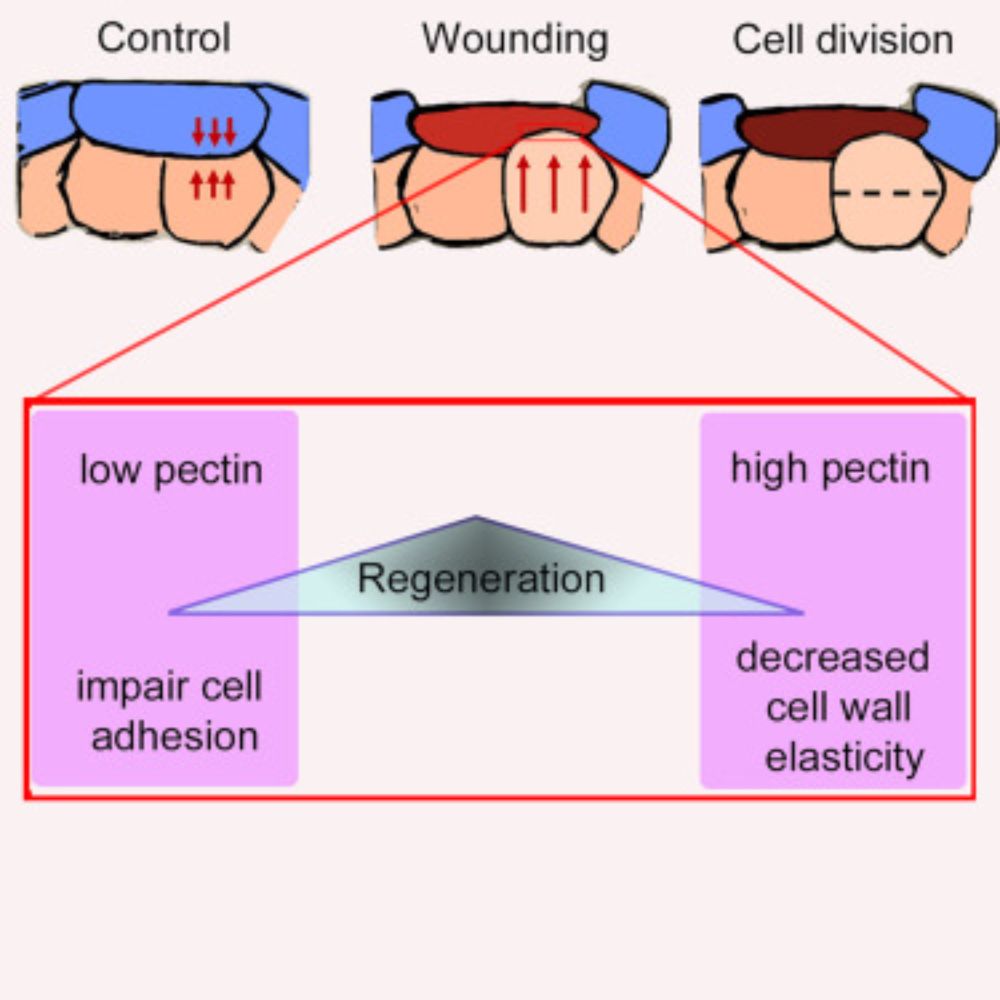
Congratulations to Prof. @eilonshani.bsky.social Eilon Shani, #Hydrosensing PI, on being elected to EMBO 2025! 🎉
This honor recognizes his outstanding contributions to plant molecular genetics and scientific excellence @embo.org
www.embo.org/press-releas...
02.07.2025 15:11 — 👍 8 🔁 3 💬 0 📌 0
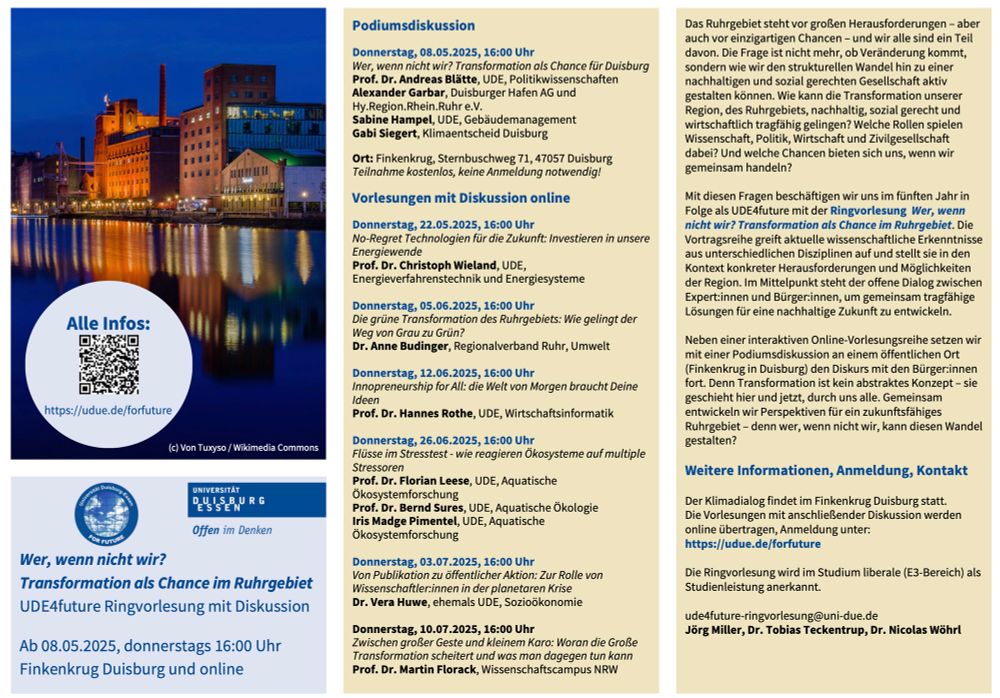
Heute 16 Uhr: Klima-Ringvorlesung @UniDUE 🌍
Prof. Dr. Wieland spricht über No-Regret-Technologien für die Energiewende.
👉 Offen für alle, mit Q&A!
Jetzt anmelden:
uni-due.zoom-x.de/webinar/regi...
#UDE4Future #Energiewende #Klimaschutz @unidue.bsky.social
22.05.2025 08:22 — 👍 16 🔁 6 💬 1 📌 0
In defense of funding foundational plant science (Joanna Friesner , Cristiana T Argueso , Wolfgang Busch , Thorsten Hamann , Lucia Strader , Mary Williams , Shuang Wu , Adrienne H K Roeder) Read more at: doi.org/10.1093/plce... #PlantScience
21.05.2025 18:04 — 👍 17 🔁 10 💬 0 📌 2

Me in the lab in a labcoat next to our freeze dryer. The glass beakers can be connected and the vacuum extends into the beakers with the sample in them. Black tubes connect the beakers with the vacuum chamber and white valves allow for individual connecting and disconnecting.

A photo of a sticker on the back of the freeze dryer in our lab that displays the manufacturing date 11-29-00.
In the lab, I like to look at equipment and play guessing "Who is younger - the lab equipment or me?" 😅
... you win this round, freeze dryer😋
18.05.2025 15:16 — 👍 3 🔁 0 💬 0 📌 0
Somehow two images are not displayed correctly... I reposted it with all images visible...
18.05.2025 15:11 — 👍 0 🔁 0 💬 0 📌 0
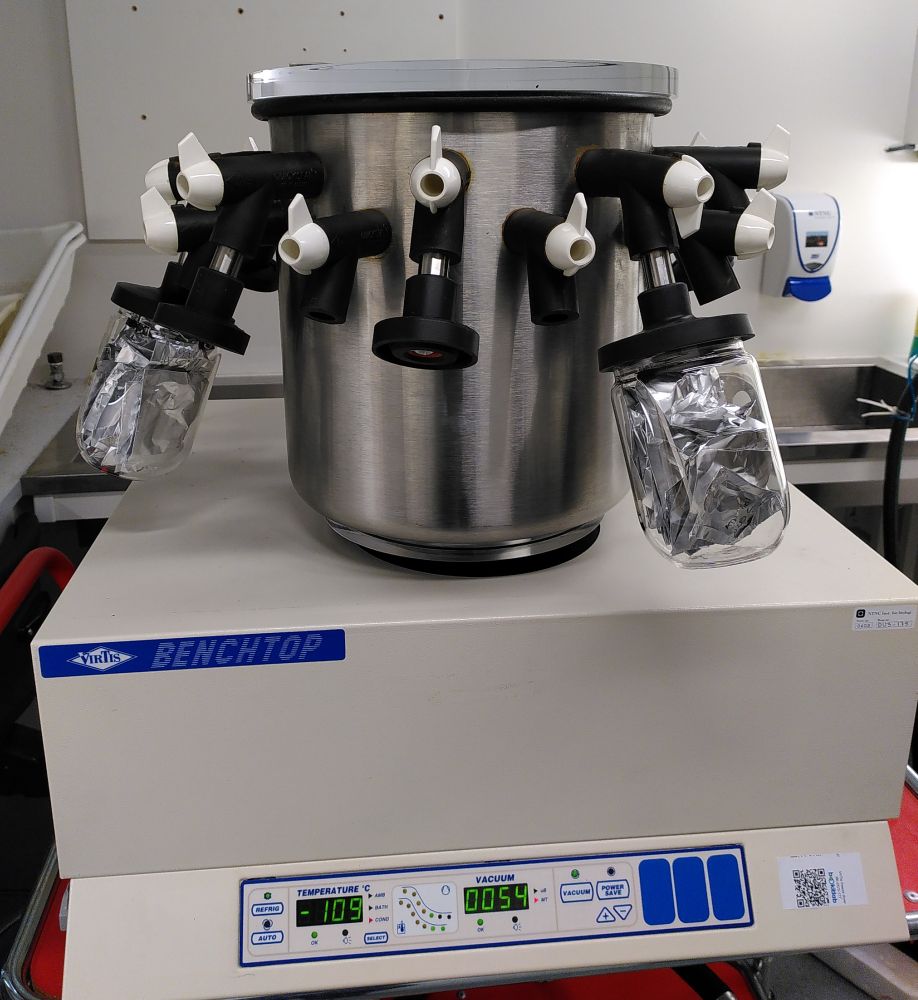
A freeze dryer with plant samples in aluminium bags. The glass beakers can be connected and the vacuum extends into the beakers with the sample in them. Black tubes connect the beakers with the vacuum chamber and white valves allow for individual connecting and disconnecting.
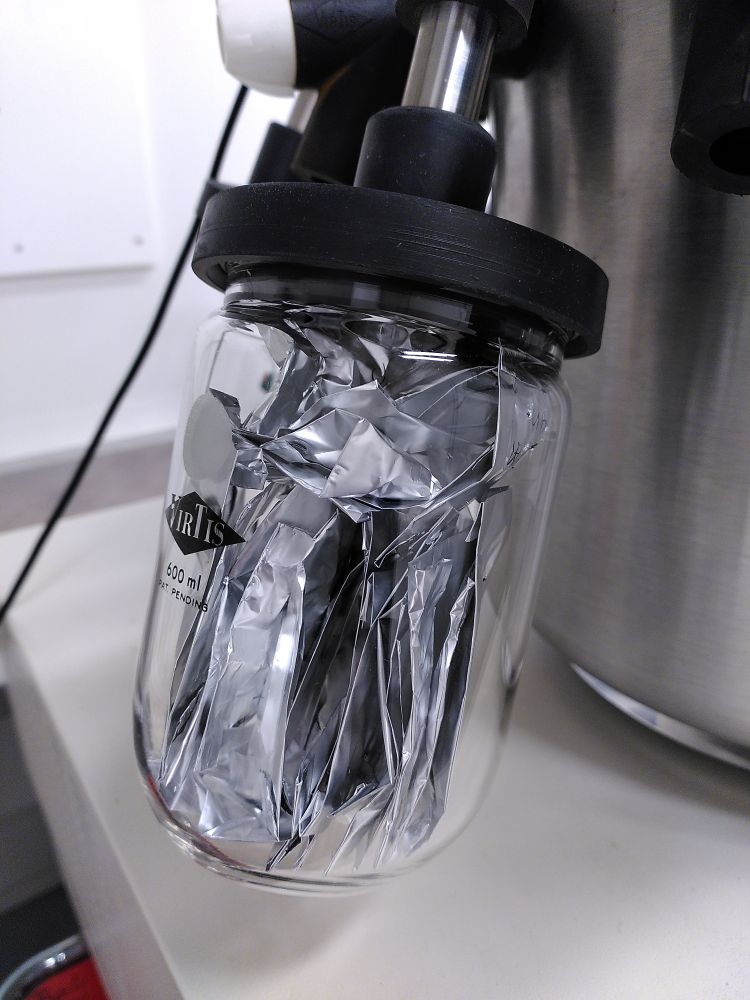
A close-up of a beaker from a freeze dryer with plant samples in aluminium bags. The glass beakers can be connected and the vacuum extends into the beakers with the sample in them. Black tubes connect the beakers with the vacuum chamber and white valves allow for individual connecting and disconnecting.
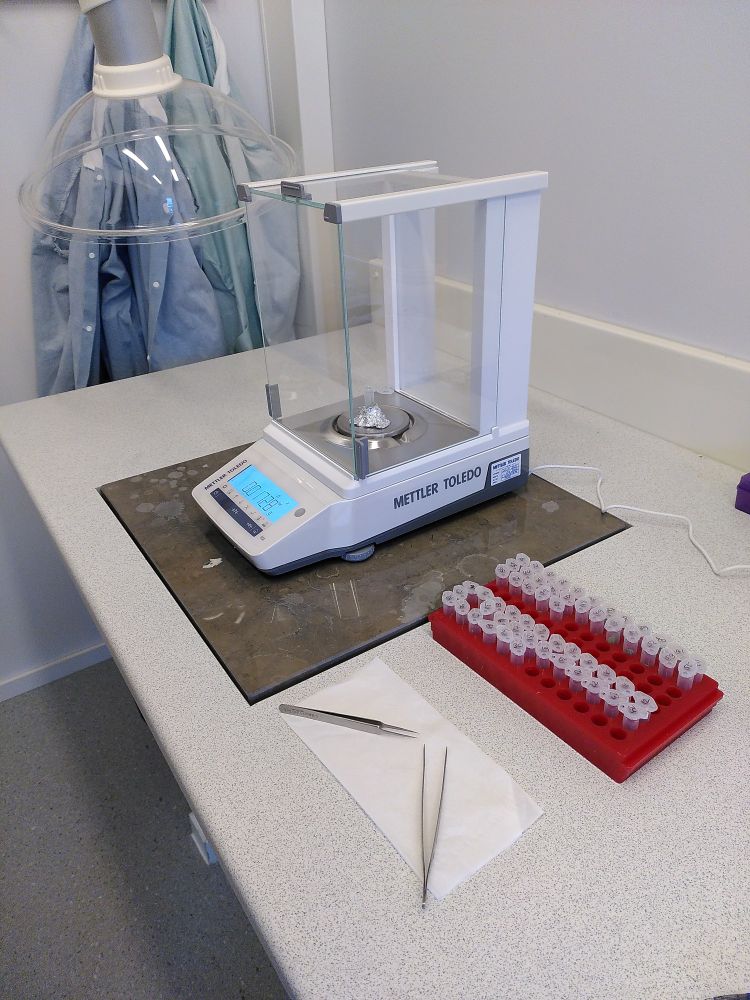
A fine scale for scaling in milligram range. The scale is resting on a special heavy table that prevents vibrations of the table to influence the scaling. A red rack with sample tubes is standing next to the scale as well as a clean tissue paper with two metal tweezers on it.

A piece of clean tissue paper with two metal tweezers on it. Between the tweezers is a 2 ml reaction tube with a metal bead and freeze dried tobacco leaf pieces in it.
This week, I processed my plant samples further🌱. I cut the areas where I injected the sample in the tobacco plants, put the pieces in little aluminium foil bags, freeze dried them and scaled equal amounts of dry leaf pieces. Scaling milligrams of leaf pieces needs quite some patience😅
#wisskomm
18.05.2025 15:09 — 👍 3 🔁 0 💬 0 📌 0

A freeze dryer with plant samples in aluminium bags. The glass beakers can be connected and the vacuum extends into the beakers with the sample in them. Black tubes connect the beakers with the vacuum chamber and white valves allow for individual connecting and disconnecting.

A close-up of a beaker from a freeze dryer with plant samples in aluminium bags. The glass beakers can be connected and the vacuum extends into the beakers with the sample in them. Black tubes connect the beakers with the vacuum chamber and white valves allow for individual connecting and disconnecting.

A fine scale for scaling in milligram range. The scale is resting on a special heavy table that prevents vibrations of the table to influence the scaling. A red rack with sample tubes is standing next to the scale as well as a clean tissue paper with two metal tweezers on it.
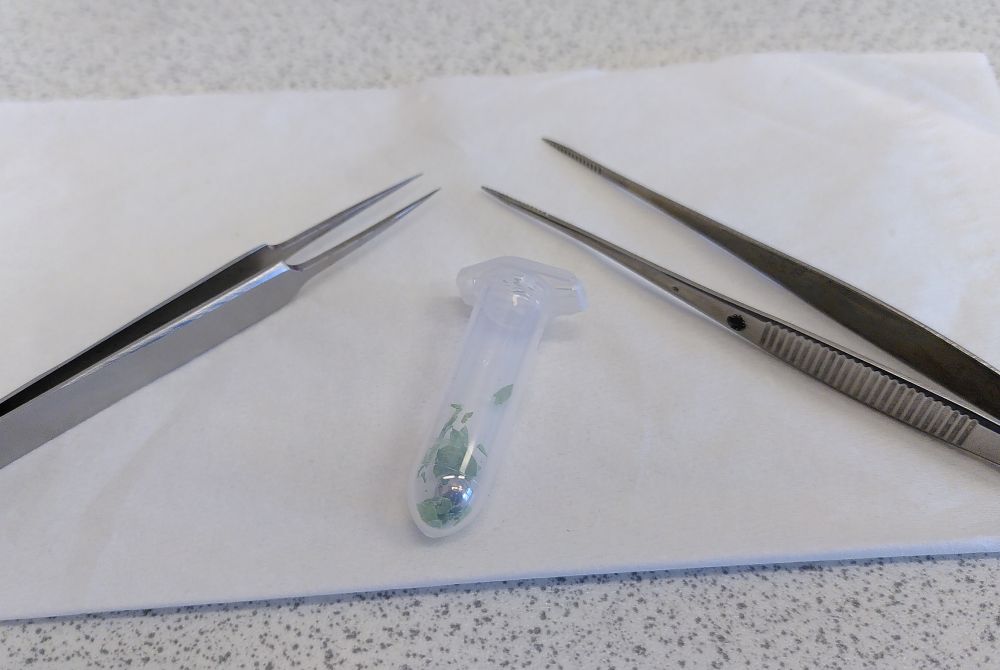
A piece of clean tissue paper with two metal tweezers on it. Between the tweezers is a 2 ml reaction tube with a metal bead and freeze dried tobacco leaf pieces in it.
This week, I processed my plant samples further🌱. I cut the areas where I injected the sample in the tobacco plants, put the pieces in little aluminium foil bags, freeze dried them and scaled equal amounts of dry leaf pieces. Scaling milligrams of leaf pieces needs quite some patience😅
#wisskomm
18.05.2025 15:01 — 👍 1 🔁 0 💬 1 📌 0
E-book Beyond GMO
Welcome to SPPS' download site! The translation of the
At the Scandinavian Plant Physiology Society (SPPS) Conference 2024, I heard that much of the support for #GenomeEditing in Sweden started after the publication of an educational book on genetically modified plants.
English translation available for free on the SPPS website spps.se/e-book-beyon...
14.05.2025 15:02 — 👍 1 🔁 0 💬 0 📌 0

Nicotiana benthamiana plants in flower pots on a black tray. A syringe and a pen are next to the pots on the tray. Where liquid has been injected into the leaves, it is visible as darker spots on the green leaves.
I use a syringe to inject liquid containing an enzyme that damages the plant cell wall into young tobacco plants. You see the liquid as dark spots. This is Nicotiana benthamiana (the wild relative of N. tabacum, the more famous tobacco plant). Excited to see how the plants react to the treatment 😁😁😁
09.05.2025 13:33 — 👍 0 🔁 0 💬 0 📌 0
In my research, I study how plants respond when they are damaged. Plants – like us – can perceive their surrounding and have an immune system. Around every cell, they have a cell wall, which provides stability and protects them. When the cell wall is damaged, plants activate their immune system...
09.05.2025 13:23 — 👍 2 🔁 1 💬 1 📌 0
This is me in the room where we work with genetically modified organisms (GMOs). To keep the GMO plants confined our special secured rooms, I am changing from my normal lab wear into a red lab coat, wear shoe covers and wear a hair net to not carry seeds or pollen outside on my clothes.
09.05.2025 13:14 — 👍 1 🔁 0 💬 0 📌 0
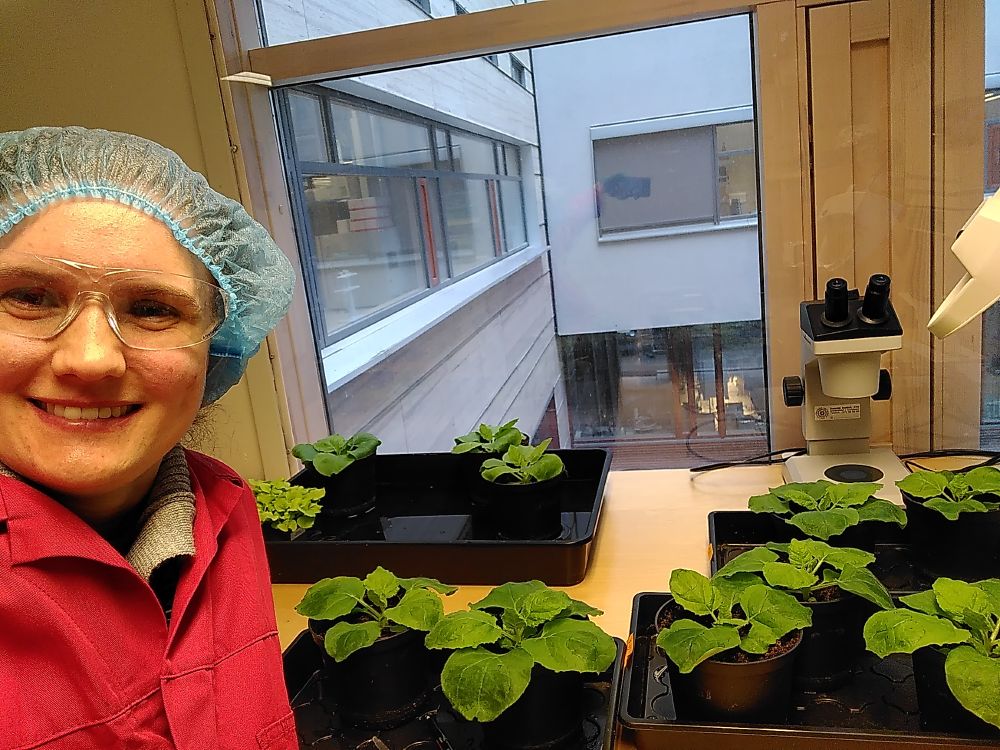
This is me treating tobacco plants (Nicotiana benthamiana) to study their immune reaction when their cell wall is damaged. I am wearing a red lab coat and a hair net to prevent carrying seeds or pollen outside of our secure facility.
When I talk to friends, family or others that don't work in research, I am often surprised and amused when I learn how they imagine me working in the lab 😅 So I thought I’d start sharing more from my everyday work doing plant science 👩⚕️🌱
@hydrosensing.bsky.social @hamannlab.bsky.social
09.05.2025 13:00 — 👍 6 🔁 1 💬 1 📌 0
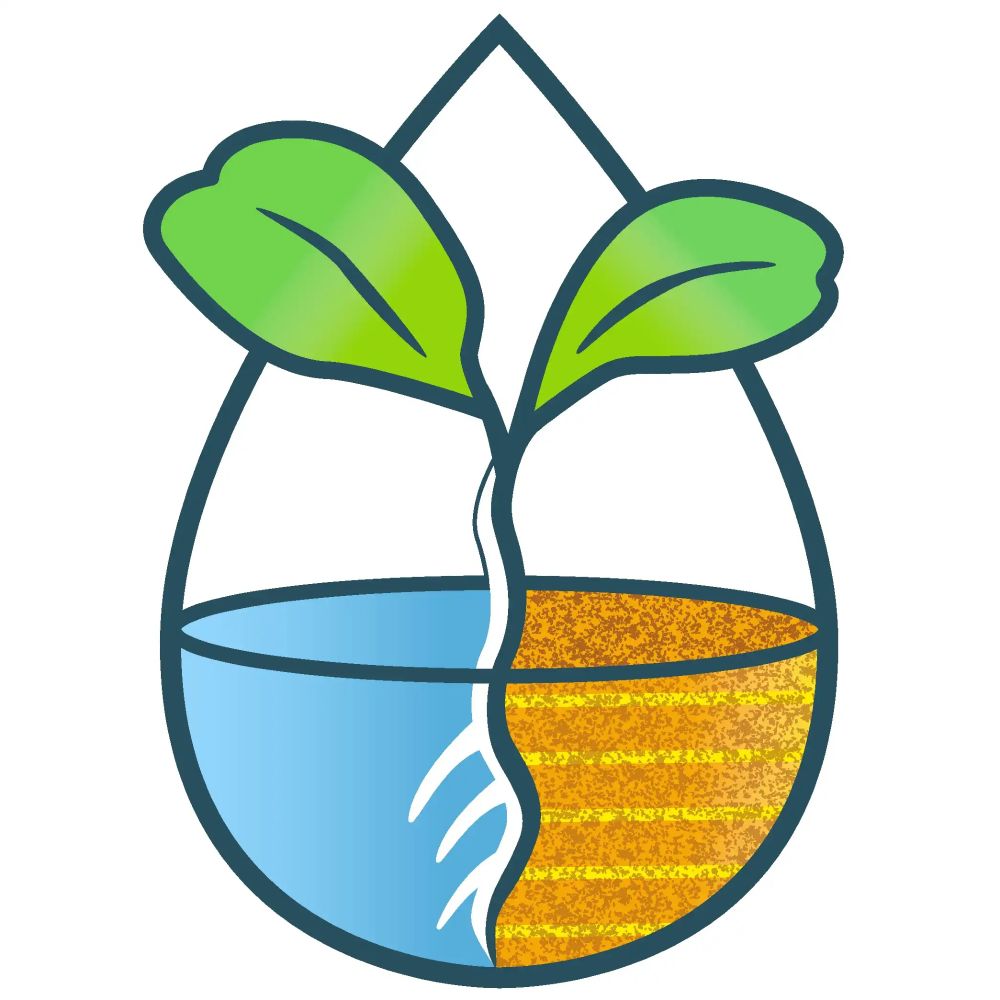
The logo of the Hydrosensing project symbolically and conceptually represents the scientific goals of the initiative, which focus on how plants perceive and respond to water stress.
The image is framed within a water droplet, an element that directly references water as both a vital resource and the main subject of study. Inside the droplet, a plant with two green leaves grows from the center, symbolizing plant life and its interaction with water availability.
The lower half of the droplet is vertically divided into two distinct sections:
The left half, in blue, represents a moist or well-irrigated environment.
The right half, in brown and ochre tones, suggests a dry soil or drought conditions.
Roots extend downward from the plant's central stem into water, visually conveying the concept of a plant sensing and responding to different levels of water availability.
The design visually reinforces the mission of the Hydrosensing project: to understand the molecular and physiological mechanisms by which plants perceive water stress, with the aim of contributing to the development of crops that are more resilient to climate change.
Glad to introduce our new logo 🎉
This new image reflects our mission: understanding how #plants perceive and respond to water stress — a step toward developing crops resilient to drought and #climatechange
🔗 hydrosensing.eu
The image tells a story:
1/3 👇
08.05.2025 08:21 — 👍 6 🔁 3 💬 1 📌 0
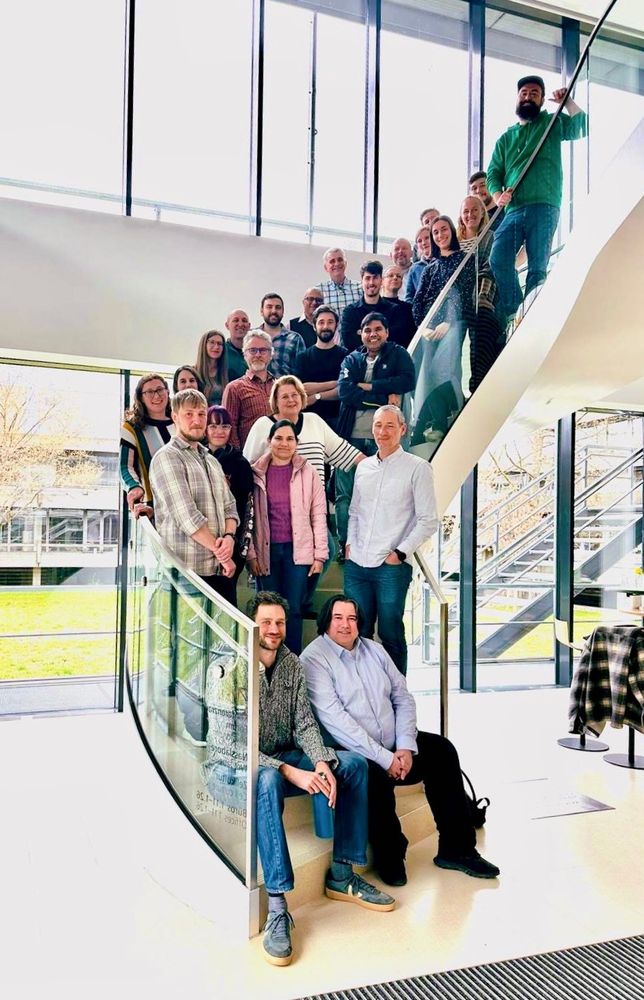
Group photo of the ERC Hydrosensing team at the project meeting in Regensburg in April 2025.

Photo of the city of Regensburg showing the old town by the river, including the old church.
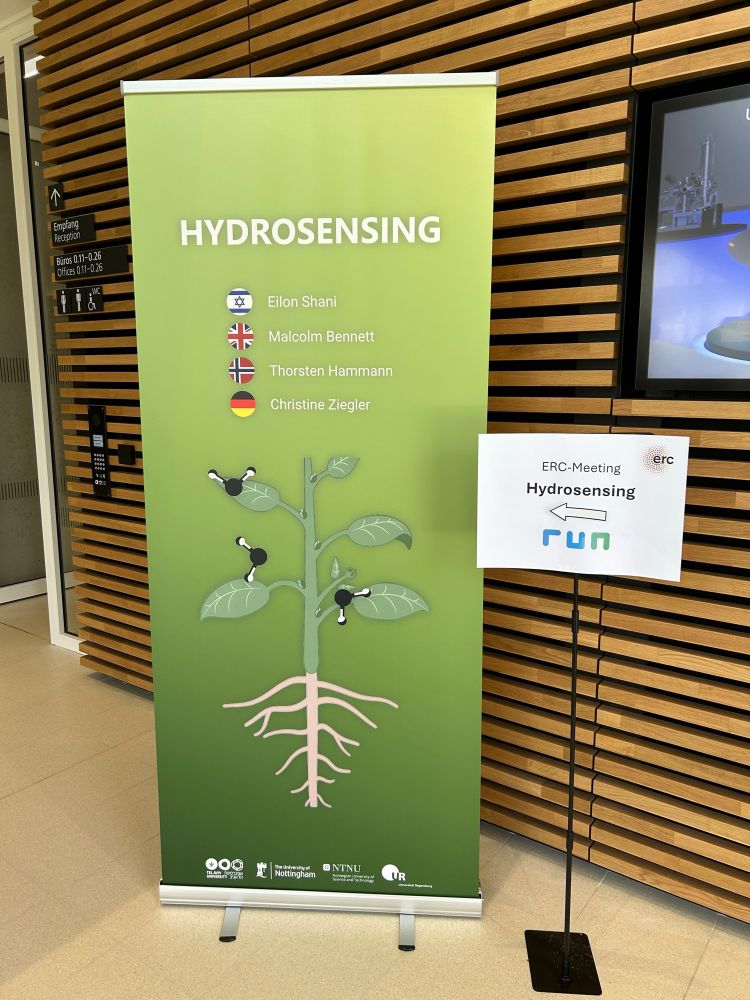
A poster at the ERC Hydrosensing project meeting in Regensburg showing a plant and water molecules as well as the names and flags of the team leaders Eilon Shani (Israel), Malcom Bennet (UK), Thorsten Hamann (Norway) and Christine Ziegler (Germany).
Super excited to start my new position in the Hydrosensing ERC Synergy Project😊 It was amazing to get a preview in Regensburg and meet all you nice and inspiring people!
Looking forward to two more years as part of this excellent, international team!
@hydrosensing.bsky.social @hamannlab.bsky.social
02.05.2025 08:10 — 👍 7 🔁 2 💬 0 📌 0
New update of the Hydrosensing Started Pack. Follow us!
go.bsky.app/7j83oiQ
22.04.2025 09:47 — 👍 2 🔁 2 💬 0 📌 0
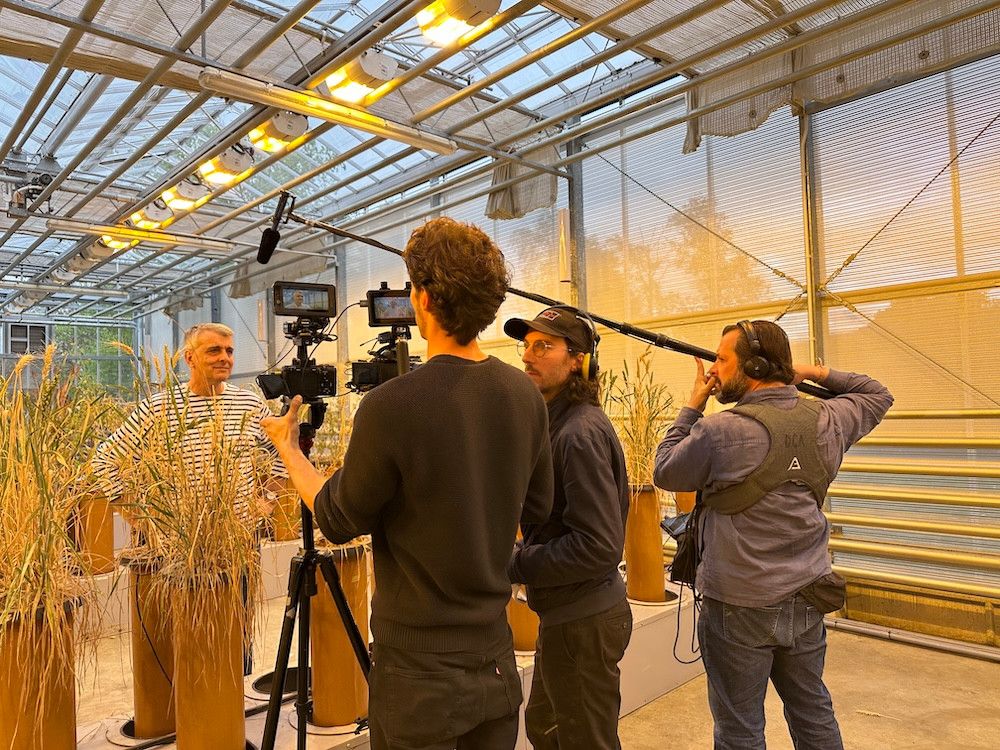
Malcolm Bennet in the greenhouse with the filming crew
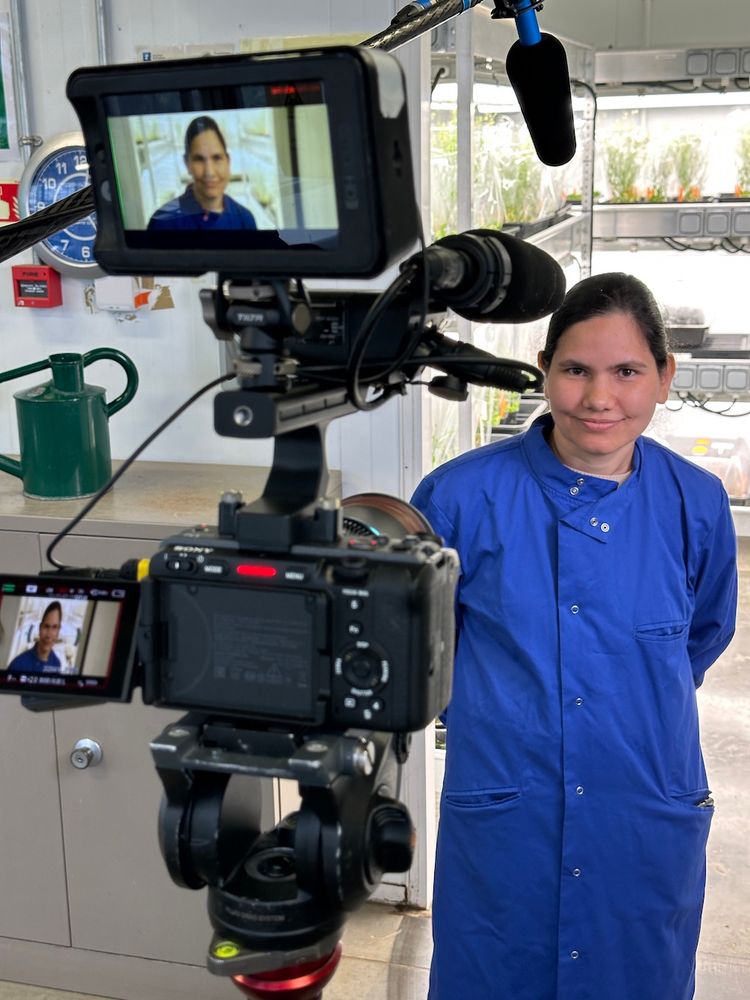
Poonam Mehra while filming
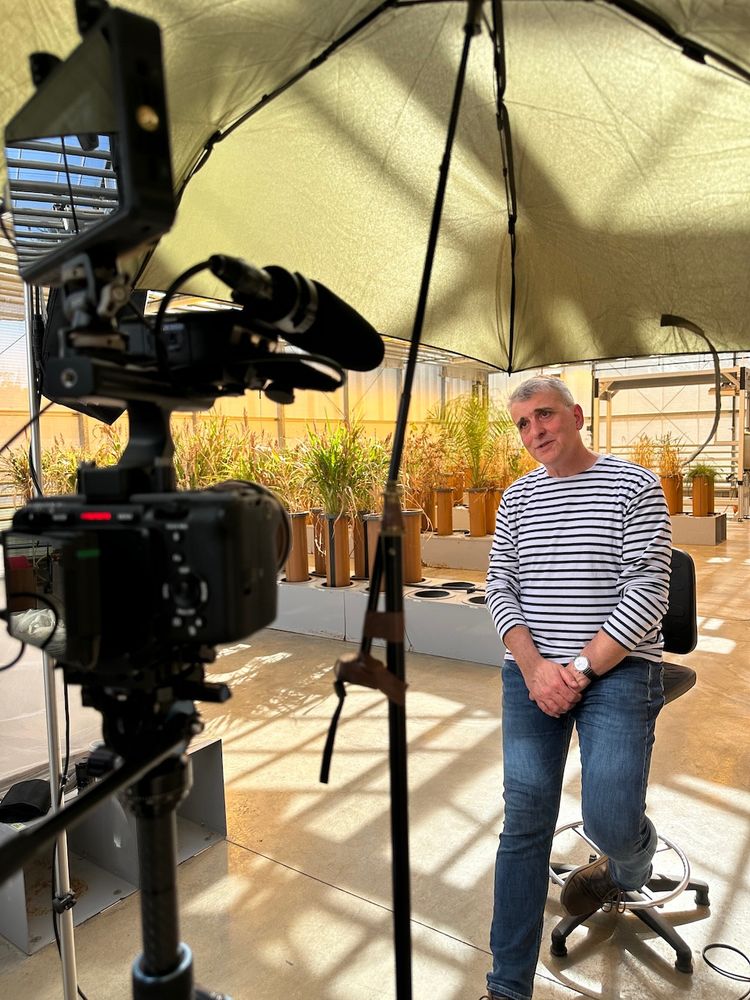
Malcolm Bennet in the greenhouse while filming
In @uniofnottingham.bsky.social ERC Hydrosensing members spent a few intense (and wardrobe-consistent 😅) days filming about research on root systems and how plants adapt to drought.
More footage for the documentary is being filmed at locations around the world in the coming year.
22.04.2025 10:48 — 👍 11 🔁 3 💬 1 📌 0
These were great days.. thank you all!
@hamannlab.bsky.social @eilonshani.bsky.social @sara-morghen.bsky.social @francesco-saffioti.bsky.social @katjaurbansky.bsky.social @wiebkehaeger.bsky.social @michaelaticha.bsky.social @hydrosensing.bsky.social @hydrophotonics.bsky.social
17.04.2025 12:22 — 👍 5 🔁 2 💬 0 📌 0
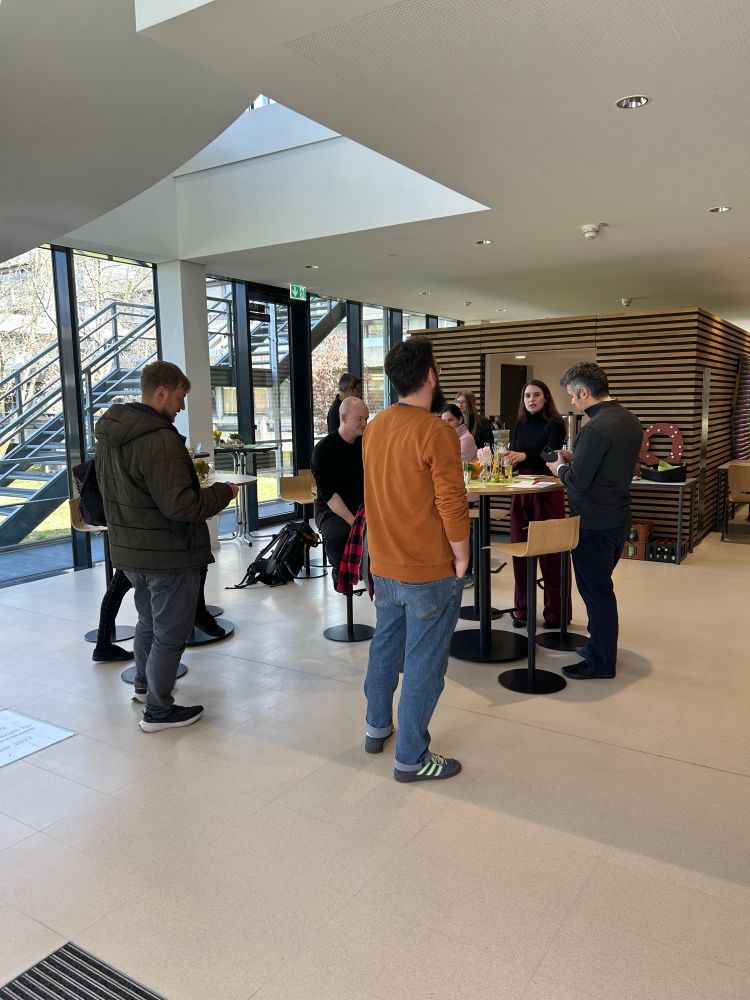
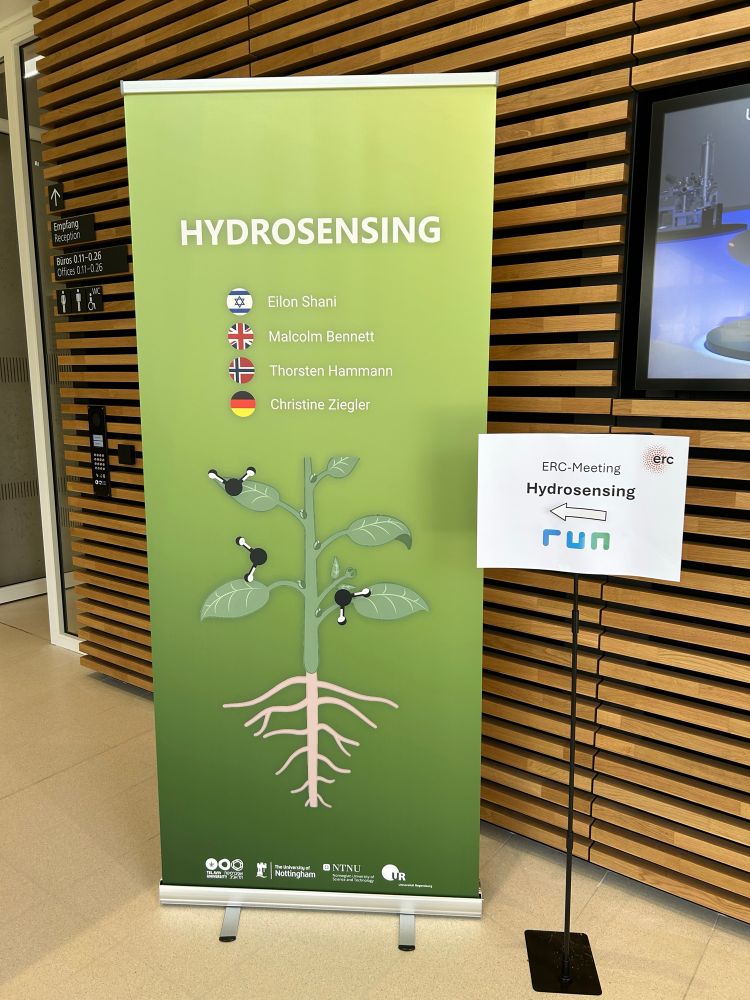
Exciting ERC synergy project meeting in Regensburg 😊@hydrosensing.bsky.social @ntnudiscovery.bsky.social @uniofnottingham.bsky.social @uniregensburg.bsky.social
11.04.2025 08:30 — 👍 8 🔁 3 💬 0 📌 0
Congratulations!
14.01.2025 06:52 — 👍 1 🔁 0 💬 1 📌 0
Plant scientist 🌱🦠🧫 🇲🇽 | Postdoc at the University of Zurich in the Cyril Zipfel and Pedro Beltrao groups, studying protein phosphorylation during plant–microbe interactions #EMBOfellow | @thesainsburylab.bsky.social alumni
MSCA Postdoc fellow, Van Breusegem Lab, Oxidative Stress Signalling. VIB-UGent Center for Plant Systems Biology
Experimental ecology and evolution | microbes | evolution of metabolic interactions | cooperation | bacterial multicellularity.
Curious how toxins drive the evolution of new traits 🐸🦖🐍🧪
In awe of nature’s cleverness and strangeness
Enthusiastic champion of caterpillars 🐛
@mpi-ce @livuni-ives
hannahrowland.co.uk
Official Bluesky account of The Grinch 🎄
Green, grumpy, and surprisingly relatable
Former Christmas thief 🎁
Recovering heart-grower ❤️
Max’s best friend (the dog, not the chaos)
Lover of strategy, sarcasm, and silence
#GrinchLife
PostDoc @mpimarinemicrobio.bsky.social | Symbiosis #Olavius
We investigate the chemical communication between different organisms - plants, insects and microbes - in Jena, Germany.
Helping scientists to write and get things done, mindfully and happily⎪www.Ifocusandwrite.com⎪Insects🐛 Ecology 🌱 she/her⎪Here some free resources for you👇
https://www.ifocusandwrite.com/free-resources
https://linkin.bio/ana-pineda-phd/
Evolutionary biology, chemical ecology, symbiosis, 🐞🐝🦠🏳️🌈
@MPI_CE
MAdLand is a DFG-funded research consortium exploring the molecular mechanism behind the transition from water to land, from alga to land plant.
Learn more on our Website: madland.science
Plant gene editor 🧑🔬🌿🧬🔧
Making plants resistant to diseases 🦠🔨
Former hippy 🌺, now a scientist 🧪
PhD student at the Jonathan Jones Lab, TSL
Postdoctoral researcher Plant Physiology at Wageningen University; trying to understand how plants respond to abiotic stress in order to improve plant stress resilience 🧂🌱☀️💚
Plant physiologist at Wageningen University and Research
rootsinsalt.com
Professor at UC Davis, studying plant immunity and bacterial pathogens
Assistant professor, Salk Institute. Cell-cell communication | peptides | receptors | plant-fungal interactions | mutualism.
https://mueller.salk.edu/
Emmy Noether/Junior Group Leader at ZMBP Tübingen 🌱 plant development | cell identity | gene regulation | time | embryogenesis 🎨 amateur printmaker | linocut
plant-microbe interaction scientist @inrae-france.bsky.social working in #France #Toulouse, Deputy director of @lipme-toulouse.bsky.social, Candidate director of @tps-institute.bsky.social, born at 329ppm CO2.
Postdoctoral 🌱 scientist at The Sainsbury Laboratory, Norwich. Interested in peptide-receptor and immune signalling.
#plantscience
Plant biologist at the University of Cambridge. Mashing up low-cost DIY tools for bioinstrumentation (biomaker.org) and engineering plant biology (openplant.org)
May the #Roots be with you!
Associate Professor @ UCLouvain.
#OpenSci #SciComm #plant #drought #cereals #gamification #bread #teaching. 👩🦰👩 #dad.
#StandUpForScience
Pronoms : he/him
Personal webiste : https://www.guillaumelobet.be/






















